Adventurous Kate contains affiliate links. If you make a purchase through these links, I will earn a commission at no extra cost to you. Thanks!
I love traveling alone in Costa Rica. It’s a place brimming with joy. A nature destination filled with rainforests, volcanoes, cloud forests, golden beaches, coral reefs — oh, and tons of adorable sloths! And more than that, it’s a very easy place to travel, ideal for first-timers.
“Pura vida” is a phrase you’ll hear throughout your solo trip to Costa Rica. It means “pure life” and you can say it as a response for anything. “How are you?” “Pura vida.” “What did you get up to last night?” “Pura vida!” It’s more than a feeling — it’s a peaceful, happy state of mind.
I think Costa Rica is one of the best countries for first-time solo female travelers as well as first-time international travelers. I know that most people head to Europe for their first solo trip — but if you’re looking for something with a cheaper flight from the US or Canada, somewhere that’s warm in the winter, a place where you can delve deep into nature, a country where the people will welcome you with open arms — think Costa Rica.
Costa Rica is an excellent solo travel destination. I think you’re really going to like it here.
Table of Contents

Why Travel Solo to Costa Rica?
Costa Rica is the perfect introduction to traveling alone in Latin America. It’s one of the easiest and safest countries to travel in Latin America, making it a bit of a “soft landing” of a country. Even if you can barely speak a few mangled Spanish words, you’ll get by fine here.
Costa Rica has excellent travel infrastructure. Costa Rica has been welcoming tourists for quite some time and they have accommodation, transportation, and tours designed and priced for budget, mid-range, and luxury travelers. No matter what kind of traveler you are, Costa Rica has the goods for you.
Costa Rica is one of the best destinations in the world for sustainable travel. Back when eco-tourism was a buzzword at best, Costa Rica was leading the way on sustainable wildlife tourism, and thanks to laying that early groundwork, it’s one of the world’s leaders today. If you’re interested in responsible travel, Costa Rica is brimming with options.
Costa Rica packs a lot of diversity into a small country. If you’re visiting Costa Rica for a week, you’ll be able to fit in jungle, cloud forest, and beach time — and maybe even a few volcanoes! The diversity extends to the climate — if it’s too rainy in the rainforest, you can always pack up and move to a sunny beach within a few hours.
Also — Costa Rica is beautiful and warm and outdoorsy, but you aren’t expected to lie on the beach all day, like many Caribbean destinations. This is a big reason why my pale-skinned friends have traveled to Costa Rica — to enjoy the weather and a little bit of beach time but getting to do other things, too, with less of a risk of sunburns.

Is Costa Rica Good for First-Time Solo Female Travelers?
Costa Rica is one of the BEST possible destinations for women traveling alone for the first time ever. And it’s my top recommendation in Latin America for first-time international travelers.
What makes Costa Rica a great destination for first-timers? The whole country is outfitted for tourism with excellent infrastructure at a variety of price points. Every tourism spot has tons of day trips and activities that you can join as a solo traveler. English is spoken extensively. There is a large expat community and it’s easy to find connections.
But more importantly than that, Costa Rica makes it easy. All you need to do is book flights and accommodation, and fill your days in with cool tours and activities.
This is a significant difference from other countries in Central America. Guatemala and Nicaragua are wonderful places to visit, but they involve rougher travel and I think they’re more enjoyable if you have more solo travel experience.
Costa Rica has been in the tourism business forever — and as a result, they’re great for everyone. Costa Rica is great for families. Costa Rica is great for honeymooners. Costa Rica is great for retirees. Costa Rica is great for vegetarians, vegans, and gluten-free folks. And Costa Rica is fantastic for solo female travelers.
Costa Rica Tours for Solo Travelers
If you’re not quite sure if you’re ready to travel completely solo, another option is joining a group tour! G Adventures is a company with whom I’ve traveled before and I recommend. Their tours are very solo-friendly, they keep their groups small, they’re sustainability-minded, and they have a ton of tour options in Costa Rica. Here are some of them:
- Costa Rica Quest (9 days from San José) — the perfect intro to Costa Rica with jungle, beach, wildlife, and canopy.
- Costa Rica Adventure (16 days from San José) — Costa Rica Quest plus three more exciting destinations.
- Costa Rica Volcanoes and Surfing (9 days from San José) — An active tour with hiking, climbing, and kayaking.
- Costa Rica & Panama Quest (16 days, San José to Panama City) — The best destinations in Costa Rica and Panama in two weeks.
- See all their Costa Rica tours here.

Is Costa Rica Good for Experienced Solo Female Travelers?
Costa Rica is great for all kinds of solo travelers! I had visited more than 50 countries before I made it to Costa Rica and really enjoyed my time there. That being said, I do think experienced solo travelers would enjoy Costa Rica more if they got off the standard tourist trail.
I would especially recommend avoiding the most popular tourist spots — particularly Tamarindo, which is nicknamed Tamagringo for a reason. You may also want to avoid places like Manuel Antonio National Park, La Fortuna, and possibly Puerto Viejo. Getting off the beaten path in Costa Rica can be its own reward.
Some cool places in Costa Rica that aren’t as overcrowded are Montezuma on the Nicoya Peninsula, which has more of a backpacker/hippie beach vibe; Turrialba, a chilled out town with easy access to whitewater rafting; and the Osa Peninsula, which is home to half of Costa Rica’s species and is the place to go for wildlife retreats.
If you’re traveling solo in Central America for several weeks or months, like I did, you may have the urge to limit your time in Costa Rica as it’s one of the more expensive countries in the region. I understand the impulse — but don’t limit it TOO much. Try to visit at least three to five places in the country.
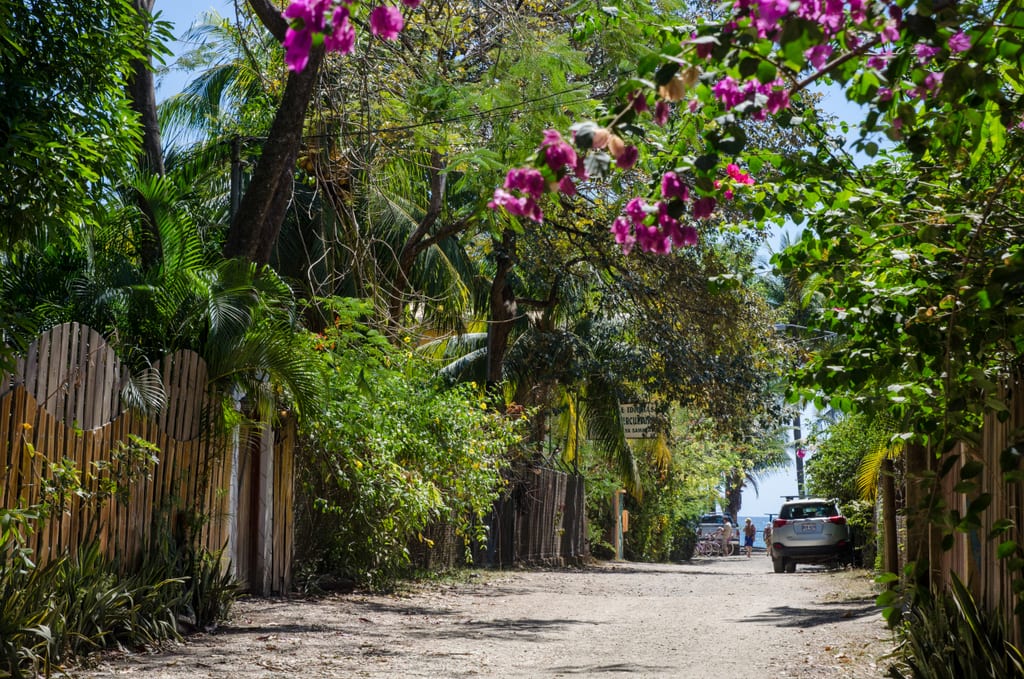
Is Costa Rica Safe?
Many Central American countries have a reputation for crime — a reputation that is often not unfounded. But one of the biggest mistakes that travelers make is painting the whole region with one brush and assuming that a low-key beach town in Costa Rica is just as dangerous as a gang-controlled neighborhood in Tegucigalpa.
Please know that Central America is a big and diverse region, and destinations vary enormously. Central America may be home to cities with high murder rates like San Pedro Sula and San Salvador, but the region is also home to safe, peaceful destinations that have very little crime.
And Costa Rica is one of the safest parts of Central America — a country where I am very comfortable sending women who have never traveled solo before.
Petty crime is the biggest risk in Costa Rica, particularly in San Jose and on public transportation throughout the country. It’s important to keep your valuables on you in transit and keep them locked up when at your accommodation, ideally in a portable safe. I also recommend using a lockable backpack while in Central America, like my Pacsafe bag — more on that below.
Most crimes committed against travelers in Costa Rica are opportunistic. If you’re the only room that leaves your door unlocked, you’ll probably be the one room that gets broken into. If you leave your passport under your pillow in a dorm (yes, I’ve seen this happen MANY times on my travels), it’s pretty likely to be stolen.
Occasionally you hear terrible news about a traveler dying in Costa Rica — from drugs, from drowning, from an adventure activity go wrong. Please understand that these tragedies make the news because they’re such rare occurrences. If they happened all the time, they wouldn’t be newsworthy.
Anything can happen anywhere, anytime. You could survive dozens of trip to dangerous destinations, then come home and get killed by a drunk driver. It’s impossible to protect yourself from harm 100% of the time.
Most solo travel safety in Costa Rica comes down to common sense. Keep your valuables on you in transit, don’t drink too much, budget extra money to upgrade to safer experiences, and keep in touch with someone who has a copy of your itinerary at home.
READ MORE:
Top 10 Travel Safety Tips for Women

Where to Go in Costa Rica
What I love about Costa Rica is that it has so much diversity within a relatively small space. Most travelers will be spending at least a week to 10 days in the country, and that gives you time to visit a few different destinations.
The best Costa Rica trips, in my opinion, combine wildlife, jungle, and beach. These are three elements that make up the perfect Costa Rica solo trip.
Santa Elena/Monteverde
The Monteverde Cloud Forest is one of the places that people picture when they visit Costa Rica. Here you can zip-line, hike, and bungee jump through the clouds. Santa Elena is an adorable small town and makes a nice base for a few days.
Manuel Antonio National Park
One of Costa Rica’s most popular destinations, Manuel Antonio is like Costa Rica in a nutshell — it’s got beach, forest, and tons of outdoor activities. It’s also an LGBTQ hotspot. While a lot of fun, it’s also one of the most crowded places in the country.
Tortuguero National Park
If you’re hoping to see sea turtles nesting, Tortuguero National Park is the place. The best months to see nesting are from July to October, with September and October being the best months. Outside of nesting season, it’s still a great wildlife destination with canals to explore by boat.
Arenal/La Fortuna
La Fortuna is a town headed by Arenal, one of the country’s fiercest volcanoes. In this popular jungle destination you can go wildlife viewing at night, trek Arenal volcano, explore the lake by boat, or spend your days soaking in the surrounding hot springs.
Tamarindo
An enormously busy beach town in Costa Rica. This is the place to stay if you want all the creature comforts of home; go further afield if you want something more special.
Corcovado National Park
If you’re intent on exploring Costa Rica’s wildlife, Corcovado National Park on the Osa Peninsula is the best place — it’s one of the most biodiverse places on the planet and home to half of Costa Rica’s species. It’s also less touristed than other parks in Costa Rica.
Puerto Viejo
This town on the Caribbean coast is a stone’s throw from the Panama border, making it a good stop if you’re visiting both countries. Here you can surf, horseback ride, snorkel, and dive in the reefs of Cahuita National Park — or party with the backpacker crowd.
San José
Nobody comes to Costa Rica to spend time in its capital — but if you have a day here in transit, there are some nice museums and markets to visit.
Sámara
A chilled out beach town and my personal favorite spot in Costa Rica. Sámara has a gray sand beach and calm waters. It’s a good environment for paddle-boarding if you’ve never done it in the sea before, and there are lots of great cafes and yoga spots.
These are just some of the destinations — Costa Rica has plenty more!
READ MORE:
In Search of Perfect Beach Towns: Sámara, Costa Rica
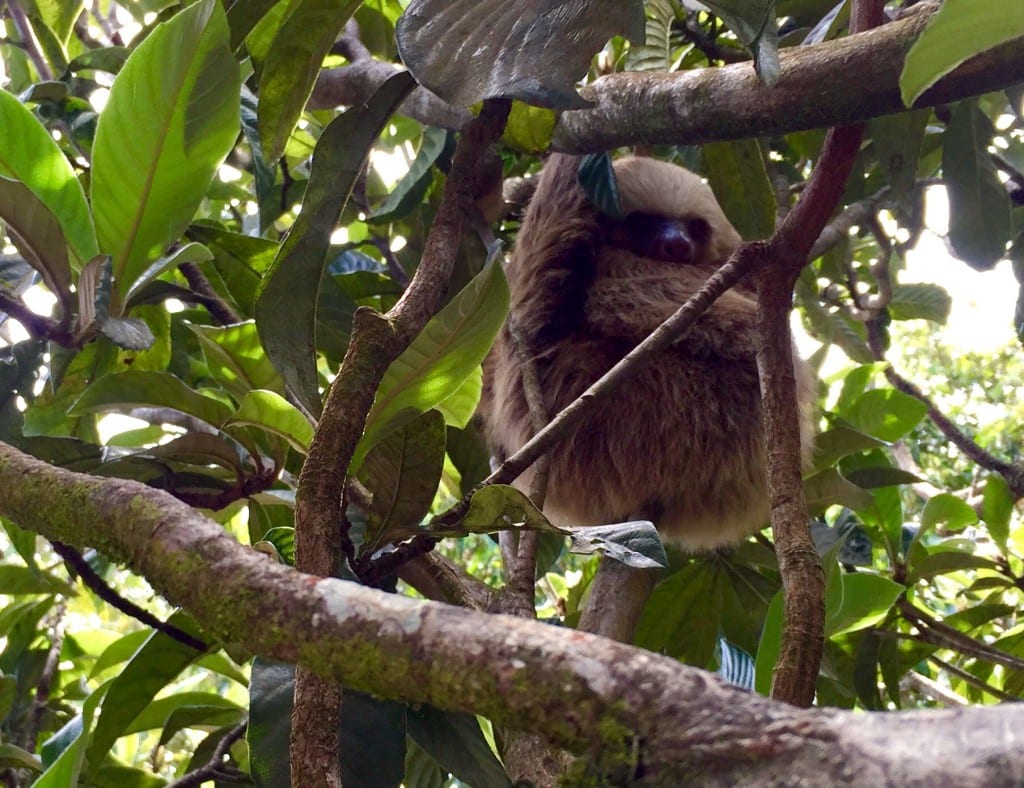
Best Things to Do in Costa Rica on a Solo Trip
See sloths in the wild. The really are the more adorable animals, and you can find them hanging out in trees in towns! I spotted this guy outside by hostel in Monteverde. You can even visit the Sloth Sanctuary of Costa Rica in Limón on the Caribbean coast!
Please don’t touch any sloths you see — just touching them scares them and sends their heart rate through the roof. Even the sloth sanctuary doesn’t let you handle them for that reason. But they are super cute to look at!
Learn to surf. If you’ve never surfed before, Costa Rica is a great place to learn! Most of the best surfing beaches are on the Pacific coast like Jacó, Dominical, Tamarindo, and Montezuma, though Puerto Viejo on the Caribbean side has become another surfing hotspot.
Watch sea turtles nesting. One of the signature activities of Costa Rica! Tortuguero National Park is the best place to see this in action, and nesting season is July to October with the best sightings in September and October. Tour operators say you have a 90% chance of seeing the turtles during the season. Book a turtle tour here.
Get into yoga and fitness. There’s something about being in a natural environment surrounded by healthy food that inspires you to have healthy habits. Join a yoga or meditation class in one of the towns — they’re everywhere — or even join a yoga retreat!
Go ziplining through the canopy. Another signature experience of Costa Rica! You can find this everywhere, and I enjoyed my experience in the Monteverde Cloud Forest. If you’re not a fan of zip-lining, you can still walk through the Monteverde Cloud Forest and its hanging bridges.
See the smallest orchid in the world. I loved visiting the Monteverde Orchid Garden — and was delighted at the tiniest orchid in the world!
Go whale watching. Costa Rica’s Pacific coast is a great place to spot whales in their natural habitat.
Watch a fútbol game with locals. Whether it’s on TV at a local bar or a real-life game at La Sabana stadium in San José, it’s a fun and passionate cultural experience!
Find your own perfect beach and chill. That’s what pura vida is all about.

Costa Rica Travel and Safety Tips
Get a day bag that locks. This is my top piece of advice for Central America. While petty crime is rarer in Costa Rica than other Central American countries, you should be prepared, especially in San José and on public transit. I ended up buying a Pacsafe bag and some padlocks; Pacsafe makes an excellent selection of bags that lock.
Stay hydrated and wear sunscreen. Even if you’re not lying on the beach all day! A lot of people don’t realize you can get burned even when it’s cloudy, which it often is in Costa Rica. Hydrating keeps you from suddenly feeling ill; sunscreen and cover-ups keep the nasty burns away.
See a travel doctor before your trip and be prepared on what to do if you get sick. On the Central America tours that I led in 2015, I was shocked that roughly half of my attendees got sick. Your doctor may advise you to take antibiotics that are easily available at pharmacies throughout Costa Rica. As I am not a medical professional, you should ask your doctor what you should do.
Costa Rica requires a yellow fever vaccination if you’ve traveled to a country with yellow fever is present. You can see the full list of countries here. Budget for this, as there it’s pricey and there is a vaccine shortage. I paid around $200 in the US and you can’t get it cheaper anywhere; the price is set. Get it for cheap while abroad if you can. If not, get it when you see the travel doctor.
Whether you’re actually checked for yellow fever in Costa Rica is unlikely, but it’s better to have it just in case.
Costa Rica has malaria in some regions: “the Distritos of Cutris and Pocosol in San Carlos Canton of Alajuela Province. Rare local cases in other parts of Alajuela, Heredia, Limón, and Puntarenas Provinces.” Some travelers choose to take malaria prophylactics; others do not. Again, that’s a conversation for you and your travel doctor. You may decide to take pills; you may decide not to. Either way, wear mosquito repellant and cover up, especially in the affected regions.
The zika virus has been documented in Costa Rica. Read more on this from the CDC. Zika should be a concern of pregnant women, partners of pregnant women, and women who intend to become pregnant soon, but if you’re none of those things, you don’t need to worry. Once more, this is a conversation to have with your travel doctor.
Is the water safe to drink in Costa Rica? The water is safe to drink in parts of Costa Rica, but it’s not safe to drink in all of Costa Rica, particularly rural areas. While most travelers rely on bottled water, it creates a major waste problem. For this reason, I recommend you bring a LifeStraw, a bottle that purifies water as you drink it through its straw. Altneratively, you can bring a reusable bottle and invest in a SteriPen water purifier (much better and faster than tablets).
Learn a bit of Spanish. It’s not totally necessary in Costa Rica, where most people in tourism speak a bit of English, but it’s kind to the people you’re visiting to greet them and thank them in their language. If you’re going off the beaten path in Costa Rica, definitely spend time practicing your Spanish.
Haggling is the way to purchase at markets. Never accept the first price — people are expecting you to lowball them. Have fun with it, but don’t get so caught up in it that you’re arguing for five minutes over the value of 25 cents with someone who makes far less money than you.
Keep your valuables locked up in your accommodation and only take with you what you need that day. I do this with my Pacsafe Travelsafe and I consider it the most important thing I pack. Keep an extra debit card and at least $100 hidden in obscure parts of your luggage.
Get an extra debit card. You should have two debit cards to two different bank accounts. If you only have one, I recommend you get a debit card from Transferwise. Keep a few hundred dollars in your account, hide the card deep in your luggage, and use it if your primary debit card is stolen.
Never leave your bags anywhere unattended. Even if you’re used to asking someone at the next table to watch your things while you use the bathroom in a coffeeshop at home, don’t do that in Costa Rica. Take your belongings with you. If you’re keeping your bag under the table or otherwise out of sight, keep it between your feet or hook the strap around one of the chair legs.
Don’t flash your valuables or wear expensive jewelry. There’s no need for fancy jewelry or purses in Costa Rica. I wouldn’t wear an Apple Watch in San José or on public transportation.
If you carry a purse, hold it close to you. I recommend a crossbody purse, made out of a tough material like leather or fake leather, that zips shut. I recommend many purses in this post. Never let it hang behind you — always keep it in a place where you can see it, and keep your hand on it if you’re in a crowd.
If you carry a wallet without a purse, don’t keep it in your back pocket. This is obvious to thieves. They will grab it and run.
Be careful about your drinking. Drink less than you ordinarily would at home — two drinks is a good limit. Only take drinks from bartenders, never take a drink from a stranger, and always keep it with you and keep an eye on it. Be especially cautious in party spots like Tamarindo, but drink spiking can happen anywhere.
Do not take drugs, even if you’re a party drug enthusiast. Drugs in Costa Rica can be cut with poisonous substances that can often lead to your death, and if you’re caught by the police, you’ll be in life-changing trouble.
Spend extra money on staying safe. If it costs you money to take a taxi rather than walk, or to stay in a guesthouse in a well-lit, central neighborhood, do it. It’s worth the peace of mind. Don’t pinch pennies on your safety.
Get a digital guidebook and keep it on your phone. Even today, I always keep a guidebook PDF on my phone — it’s great for calculating approximate time of journeys, knowing which days places are closed, and it lists medical centers you should go to in case of emergency.
I’m a big fan of Lonely Planet guidebooks — get the digital version of Lonely Planet Costa Rica or if you’re hitting a few countries, Central America on a Shoestring. You can buy individual country chapters if you’d like, only through the Lonely Planet site.
Most importantly, you have no obligation to be nice to anyone. Women often feel the need to be nice and please people at all costs. You don’t have to — not to locals, not to travelers, not in Costa Rica, not in your hometown. If anyone is making you feel uncomfortable, just leave. Trust me — you won’t be the rudest person they meet that day. And so what if you were? You’re never going to see them again.

Best Time to Travel to Costa Rica
The best time to travel to Costa Rica is during the dry season — roughly January to April. During this time, you’ll have pleasant temperatures and the least amount of rain.
Rainy season in Costa Rica, or “green season,” lasts roughly from May to December. This doesn’t mean it rains all day — it may mean that you’ll experience a brief rainstorm each day and have nicer weather for the rest of the time.
There’s a bit of geographical variance within this. The Nicoya peninsula in the northwest, home to many of Costa Rica’s best beaches, is the driest part of the country. If you’re looking for reliably sunny days, your best bet is Nicoya from January to April.
The Caribbean side of Costa Rica tends to have heavier rain year-round, but paradoxically, things tend to be sunnier in September and October, which tends to be the rainiest time of year in Central America and the Caribbean!
One very seasonal activity is sea turtle nesting in Tortuguero National Park — you’re most likely to see nesting from July through October, with the best months being September and October.
In terms of prices, Costa Rica tends to be the most expensive during North America’s winter — from December to March, with the peak being between Christmas and New Year’s. This is when Costa Rica will be the absolute busiest and prices will be at their highest. If you’re looking to book a trip to Costa Rica between Christmas and New Year’s, I urge you to book accommodation as early as possible.
If you’re traveling from a snowy region in winter, or connecting through a city like New York or Toronto, consider the possibility of your flight being cancelled due to snow. That almost happened to me on a flight to Costa Rica and it’s a reason why you should get travel insurance for your trip.
One major tip — visiting during the “dry season” is not a guarantee of dryness. I was in the Arenal/La Fortuna area for three days in January and it poured buckets the whole time! But the good thing about Costa Rica being a small country is that you can hop on a bus and be somewhere sunnier in just hours.
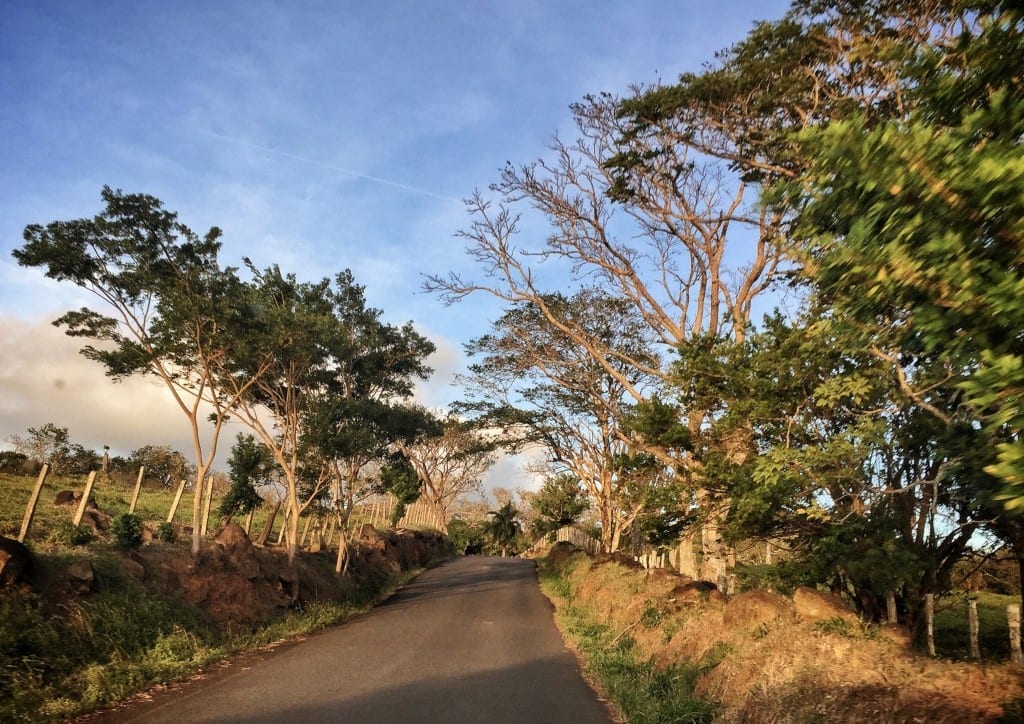
How to Get Around Costa Rica Solo
Most Costa Rica trips begin with a flight to either San José, located close to the center of the country, or Liberia in the northwest, close to the Nicoya peninsula. I use Skyscanner to find flights to Costa Rica, as they tend to have the cheapest rates.
From there, it’s easy to get around the country through a mix of buses and tourist shuttles — or even renting a car if you’d like.
Getting Around Costa Rica by Bus
If you want to get around Costa Rica the cheapest way possible and the way Ticos do, travel by bus! Costa Rica’s buses are safe, cheap, and while they’re basic, you’re not paying much for the experience.
Keep in mind that Costa Rica’s buses tend to be based on where locals go — not where tourists go. If you’re hopping between major transit points, I recommend traveling Costa Rica by bus; but if you’re going between two random tourism hotspots in two different regions, you may be better off taking a direct tourist shuttle.
Getting Around Costa Rica by Tourist Shuttles
Another option and one that doesn’t get talked about as much is “tourist shuttles” in Costa Rica. These are typically minibuses or vans that focus exclusively on taking tourists from place to place.
Tourist shuttles are more expensive than local buses, but they are almost always more comfortable and convenient. Some of them follow a set route between tourist hotspots (say, from La Fortuna to Manuel Antonio National Park); others go to a nearby destination and you’re able to book your final route separately.
I’m a huge proponent of taking tourist shuttles in Central America — they save you a ton of time and effort. You can book them at tourist agencies right in the town you’re visiting.
Getting Around Costa Rica by Private Transfer
A lot of travelers in Costa Rica get around by private transfer — essentially a private driver to take you from place to place.
For the most part, I don’t think private transfers are necessary for a solo traveler — it will end up costing you a lot more money. The only exceptions would be if you were traveling somewhere really random and isolated or if you had no choice but to travel at night.
But you can book private transfers here and there, as complements to public buses or tourist shuttles. It’s much more economical, for example, to join a tourist shuttle from, say, Tortuguero to Tamarindo, getting in most of the mileage for less, then getting a taxi to your beach town of choice on the Nicoya peninsula.
Renting a Car in Costa Rica
Renting a car is another option for solo travelers in Costa Rica. For the most part, roads are in good condition, much more so than in other Central American countries. Speaking on a personal level, Costa Rica is the only Central American country where I’d feel comfortable driving alone, with the possible exception of Belize.
If you want to have the ultimate flexibility in your travel plans, or if you’re hauling around big equipment like a surfboard, renting a car may be the best option for you.
Check out car rental rates here on RentalCars.com.

Eating Alone in Costa Rica
Traditional Costa Rican food, frankly, isn’t the most exciting food you’ll ever eat — there’s a lot of rice and beans (or gallo pinto, rice and beans cooked together), served with plantains, meat or fish or eggs, sometimes fruit or other side dishes.
Those ingredients, along with corn, are the basic building blocks for most Costa Rican dishes. As you can imagine, Costa Rican food can be very tasty but a bit repetitive.
Luckily, Costa Rica excels when it comes to health food, international food, and especially vegetarian and vegan food (though always ask if the beans were cooked in meat). There are tons of healthy dishes to choose from and in popular tourist spots, it seems like there are half a dozen healthy cafes. If you eat a plant-based diet, you’ll do very well in Costa Rica.
This is how I ate in Costa Rica — lots of fresh, healthy food, salads, vegan dishes, fruit shakes and vegetable juices, occasionally splurging on tacos and eating plenty of local Costa Rican meals, too. Mix that in with hiking and surfing and you might come back a few pounds lighter!
You won’t be judged for eating alone in Costa Rica — Costa Rica is such a popular tourism destination that nobody will bat an eye at you sitting by yourself. Plenty of solo travelers do the same thing, as do locals who just want to get a bite to eat on their own.
And don’t forget to indulge in delicious Costa Rican coffee!
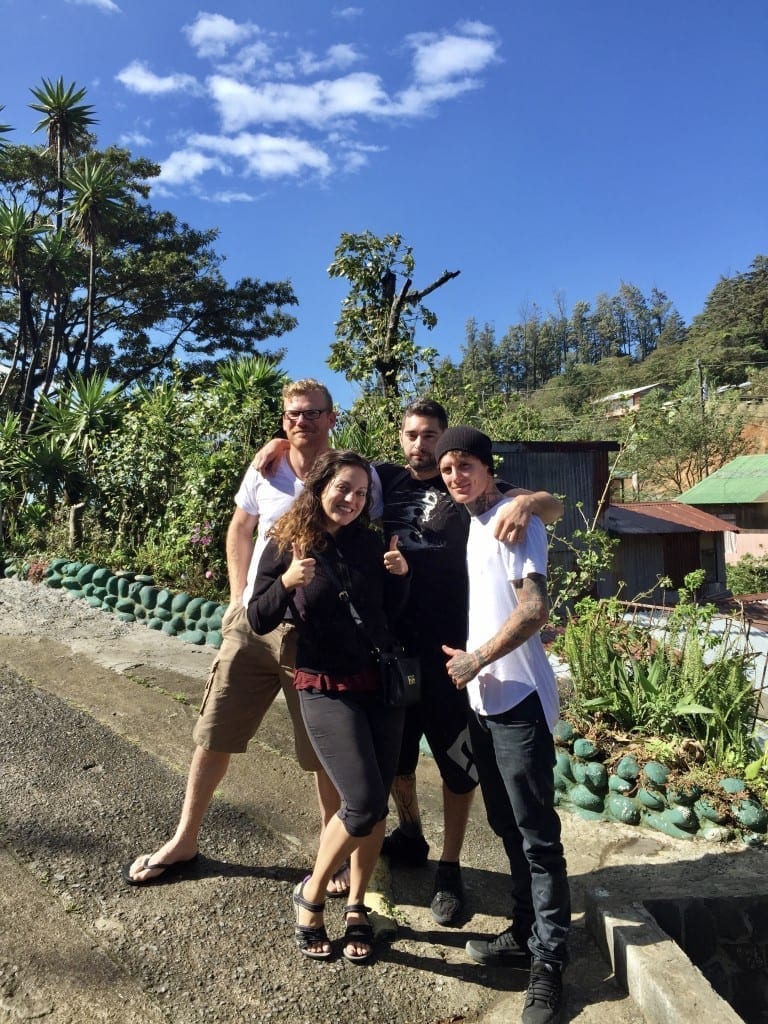
How to Meet People in Costa Rica
Costa Ricans are friendly, fun, and always quick to laugh! Whether you want to meet Costa Rican friends or hang out with other travelers, you’re in an easy place to meet new people on your Costa Rican trip.
Frankly, I met a lot more Ticos in Nicaragua than anywhere else! But I met a lot of fellow travelers in Costa Rica, especially at my accommodation.
Stay in social hostels and guesthouses. Read through the reviews of hostels and guesthouses (and keep in mind that many Costa Rica hostels have private rooms!) and spend time in the common areas. I met these guys above at a hostel in Santa Elena.
Check out local meetups via Meetup.com. Whether you’re into travel, running, movies, board games, or just want to meet a group of nice people, there’s a Meetup for that.
Couchsurfing. The Couchsurfing Costa Rica community isn’t just for free accommodation, it’s also for socializing. The local Couchsurfers often put on events and meetups in a variety of destinations.
Join local tours and events. Costa Rica is all about activities! Going horseback riding or learning to surf or hiking a volcano is a great way to meet other travelers in Costa Rica! Once the day is over, ask them if they feel like getting a drink or dinner.
Put out feelers on social media. You never know — often a friend of yours will have a cousin or friend in Costa Rica at the same time as you, or knows someone who is living there long-term.
Tinder. If you’re looking to date or hook up in Costa Rica, it’s as easy as swiping right.

What to Pack for a Costa Rica Solo Trip
If you’re traveling to Costa Rica, you should be prepared for the outdoors! Here are the items that I found particularly useful on my Costa Rica trip:
Trail runners — the best shoes for hiking in Costa Rica. They work equally well as sneakers and hiking shoes, as long as you’re not doing super-intense mountain hiking, which you won’t be doing in Costa Rica. I love my Merrill Siren Edge Q2 Waterproof Trail Runners.
Sports sandals — Lightweight supportive sports sandals, better than flip-flops for light walks in the outdoors. I’ve been wearing my Teva Tirra sandals since 2010. I’ve worn them on cave swimming hikes in Thailand and Belize and was the only person who didn’t soak her sneakers.
Flip-flops — Essential beach footwear. I can’t wear most flip-flops due to arch issues but I ADORE my Abeo flip-flops with arch support.
Warm clothing — Parts of Costa Rica can get cold at night, especially in the mountains, and public transportation often has the AC blasting. I usually bring a hoodie and a pair of leggings or yoga pants.
A Speakeasy Travel Supply scarf. These scarves are ideal for travel — they all have a hidden passport pocket and some come in light fabrics perfect for Costa Rica. I love these scarves (I even designed my own!).
Lifestraw water bottle — The water is safe to drink in most of Costa Rica, but not some rural areas. Be on the safe side with a Lifestraw water bottle, which filters any kind of water as you drink it. I love mine.
Reef safe sunscreen. Even if you’re not planning on diving or snorkeling, this helps protect Costa Rica’s reefs off shore.
A portable safe. By far the most important thing I pack — it keeps your valuables safely locked up in your room.
A Divacup, if you menstruate. A great way to avoid buying pads and tampons and ultimately creating more waste in Costa Rica.
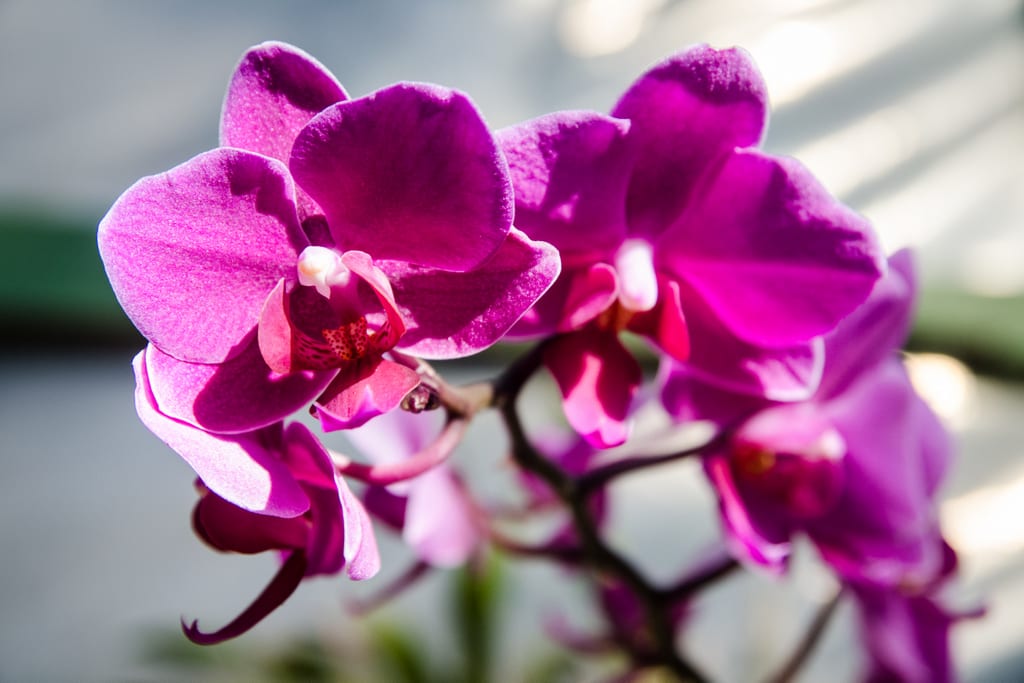
Travel Insurance for Costa Rica
One last note — it’s absolutely vital to have travel insurance before traveling to Costa Rica. If you get sick or injured on your trip, if you get robbed, or even if you have to be flown home, travel insurance will protect you from financial ruin. I use and recommend World Nomads for trips to Costa Rica.
I had one instance where I almost had to use my travel insurance in Costa Rica — my flight to Liberia was scheduled on a day when a major snowstorm was about to hit New York City. JetBlue offered me the chance to move my flight a day early before the storm hit, but most airlines won’t do that.
If I hadn’t had that option, I would have been stuck paying for a new, more expensive flight booked at the last minute — and travel insurance would have covered the difference. One of the many reasons why it pays to have it.
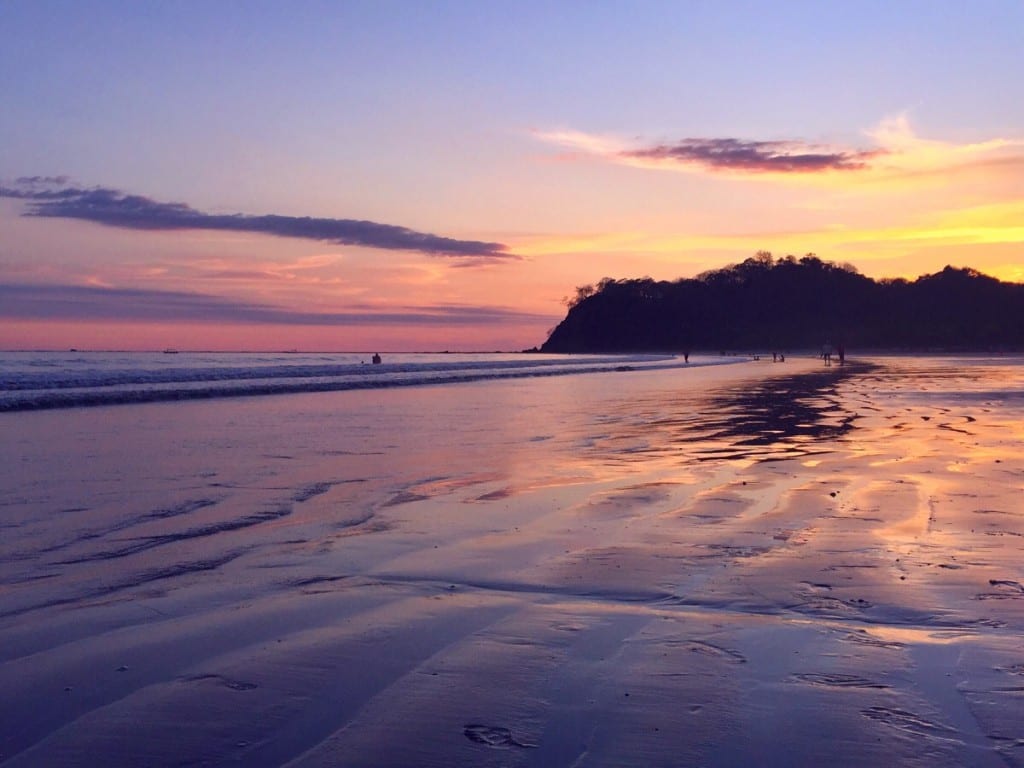
Costa Rica is Waiting for You!
Costa Rica is a destination brimming with adventures. I know you’re going to have a wonderful trip — and I hope this is the beginning of many wonderful solo trips around the world. Costa Rica this year, maybe Italy or Thailand or even Colombia next year?!
And when you come back from your trip and your friends ask you how Costa Rica was, turn to them with a grin and say the phrase you now know well: “Pura Vida.”
READ NEXT:
Visiting the Cloud Forest of Monteverde
A Perfect Beach Town: Sámara, Costa Rica
Guide to Traveling Alone in Central America
See all posts about Costa Rica here.
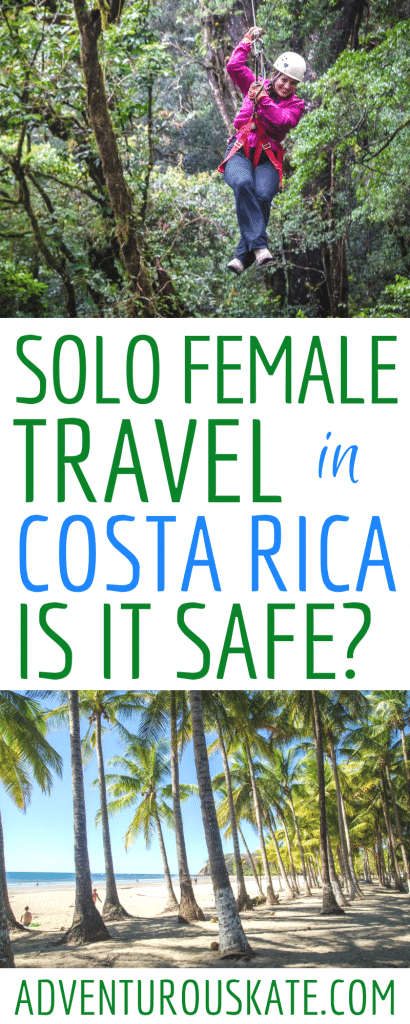
Have you traveled solo in Costa Rica? Share your tips!